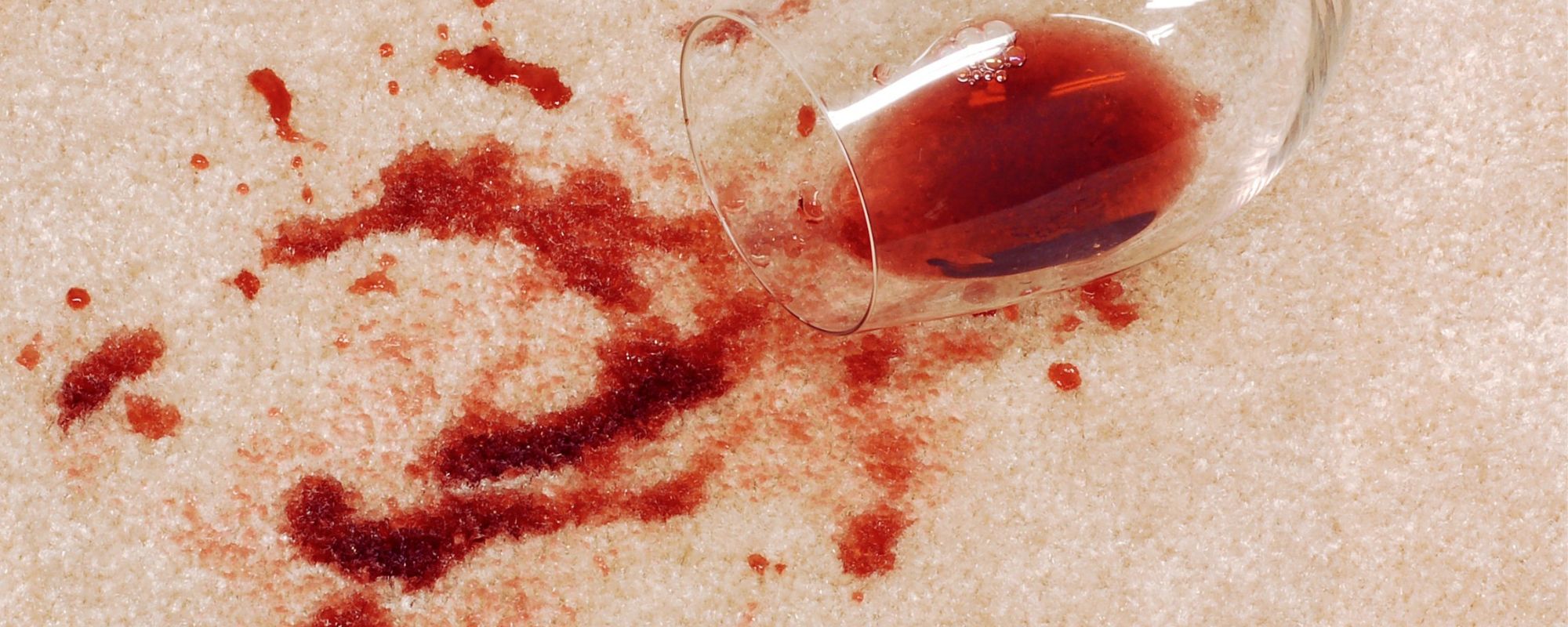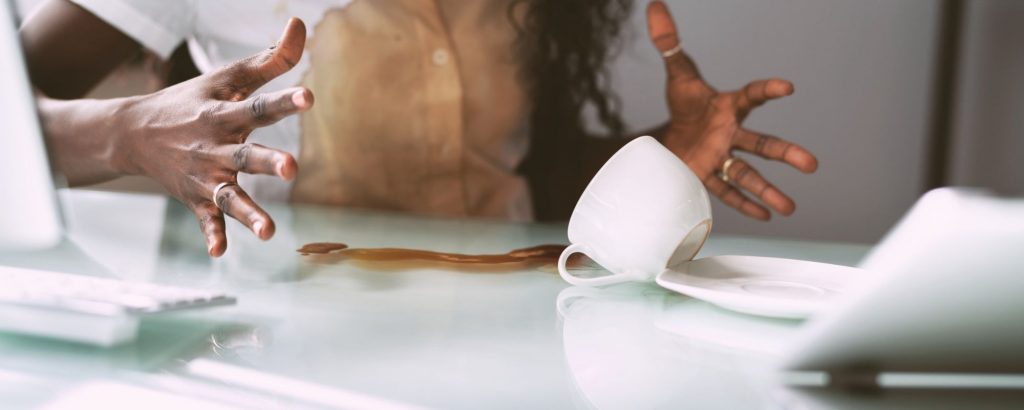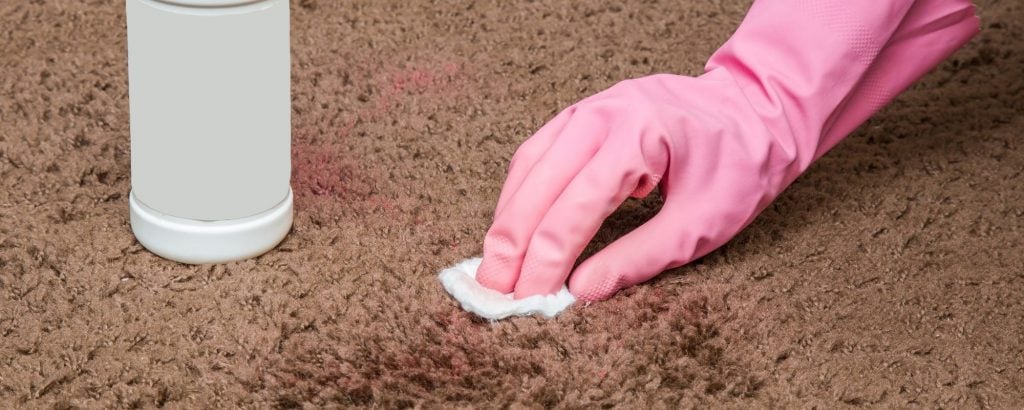Stains are a common household problem that can cause frustration and headaches. Whether it’s a coffee stain on your favorite shirt, tomato sauce on your carpet, or a wine stain on your sofa, stains are an inevitable part of life. However, with the right techniques and tools, you can remove most stains without damaging the material. In this article, we’ll go over some effective methods for removing common stains from various surfaces and materials.
Please note: This blog post contains affiliate links and the author of the blog may earn a commission if you purchase through the link. This is at no additional cost to you. It’s like a virtual high-five for providing quality content.
General Stain Removal Tips
- Try to treat the stain before it dries.
- Don’t put any fabric in your dryer before the stain has been completely removed.
- Try to remove any excess liquid before treating the stain.
- Use cold water before hot, because it’s less likely to help the stain set.
- Don’t use water on oil-based stains, because it will help the stain set.
- Only blot – do not rub or scrub the stain, unless otherwise noted.
- Make sure you check labels or test an inconspicuous spot before treating a stain, as some fabrics are dry cleaning only.
It may take more than one attempt to get a stain out. Keep trying!
Common Stains and How to Remove Them
Coffee Stains
Coffee stains are a common problem, especially for us coffee lovers who have a tendency to miss our mouth from time-to-time (only me?). To remove a coffee stain, start by blotting the stain with a clean cloth or paper towel to absorb as much of the liquid as possible. Then, mix one tablespoon of dish soap with two cups of warm water and apply the solution to the stain. Blot the stain with a clean cloth until the stain is removed.
Tomato Sauce Stains
Tomato sauce stains can be stubborn, but with the right technique, they can be removed. Start by blotting the stain with a clean cloth to remove any excess sauce. Then, mix one tablespoon of white vinegar with one tablespoon of dish soap and two cups of warm water. Apply the solution to the stain and blot with a clean cloth until the stain is removed.
Wine Stains
Ugh, wine stains. They can be a nightmare to remove! But with a few simple steps, you can get rid of them. First, blot the stain with a clean cloth to remove any excess wine. Then, mix one tablespoon of hydrogen peroxide with one tablespoon of dish soap and apply the solution to the stain. Blot the stain with a clean cloth until the stain is removed.
Ink Stains
If you’re like me and forget to click your pens closed or have kids who love to draw, ink stains are a common problem. To remove an ink stain, start by blotting the stain with a clean cloth to remove any excess ink. Then, apply rubbing alcohol to the stain and blot with a clean cloth until the stain is removed.
Permanent Marker Stains
With permanent marker stains, it’s important to clean it right away. Start by applying rubbing alcohol to the stain and then blot with a clean cloth until the stain is removed. If you’re concerned about the rubbing alcohol affecting a surface finish, I’ve also had luck with rubbing toothpaste across the stain. If the stain persists, you can try using a mixture of baking soda and water. Apply the paste to the stain and let it sit for a few minutes before rinsing off with water.
Blood Stains
How to remove the stains of thine enemies? Sorry, couldn’t help myself. In all seriousness, blood stains can be tough to remove, but it’s important to act quickly before the stain sets in. First, blot the stain with a clean cloth to remove any excess blood. Then, mix one tablespoon of hydrogen peroxide with one tablespoon of dish soap and apply the solution to the stain. Blot the stain with a clean cloth until the stain is removed.
Oil and Grease Stains
I’m a foodie. I love to cook. But I’m also a klutz. So, I’ve had to get out a few oil and grease stains. Luckily, what you use to clean your greasy pans can also be used to get grease and oil out of fabric. Start by applying baking soda to the stain and letting it sit for a few minutes. Then, apply dish soap to the stain and scrub with a clean cloth until the stain is removed.
Paint Stains
Figuring out what kind of paint you’re dealing with is the first step. After that, you’ll want to scrape off any excess paint with a knife or scraper. What you do next depends on the type of paint:
Oil-Based: Dab the stain with turpentine or a paint thinner. If possible, do this on the back of the stain (if it’s a shirt, turn it inside-out). Do this until no more paint comes off on your rag. Then, spray with a laundry stain remover and let it set per the instructions the product label. Finally, machine or hand wash the stain. You may want to do this twice before allowing it to dry.
Water-Based: Rinse out the stain with warm water. Then, saturate the stain with a 50/50 mix of laundry detergent and water. Blot it with a clean cloth. Repeat until there’s no more paint and wash as you normally would. You can also use laundry stain removers. Water-based paints are much easier to get out than oil-based.
Nail Polish Stains
Nail polish is another substance that is important to treat before it dries. To remove a nail polish stain, start by blotting the stain with a clean cloth to remove any excess polish. Then, soak a rag with non-acetone nail polish remover. Test a discreet section of the material to make sure the nail polish remover won’t damage it. If all is good, use the rag to blot the stain (it’s important not to completely soak the material). Next, blot it with a clean cloth to pull out the nail polish. Alternate the nail polish remover and blotting until the stain is removed.
If the nail polish has dried, you should start by scraping the nail polish to see if you can get any off (without damaging the surface). Next, soak the stain with cold water. Then, spray it 10-15 times with a hair spray that has a high alcohol content. Blot the stain with a little bit of rubbing alcohol and scrub it with a soft-bristle brush dunked in cold water. Let it air dry.
Deodorant Stains
Deodorant stains can be unsightly and regular laundering doesn’t always remove them. To remove deodorant stains, mix equal parts of white vinegar and water, and apply the solution to the stain. Let it sit for a few minutes before washing the affected area with warm water and soap.
Chocolate Stains
In case you have a run-in with a chocolate fountain or your child accidentally sits on their chocolate bar, here’s how you can remove a chocolate stain. Start by scraping off any excess chocolate with a knife or scraper (I know what you’re thinking: ignore those urges to eat it.). Then, mix one tablespoon of dish soap with two cups of warm water and apply the solution to the stain. Blot the stain with a clean cloth until the stain is removed. You can also use a stain remover spray. Wash it in the hottest water listed on the fabric’s label.
Grass Stains
Grass contains pigments that transfer to natural materials and fabric very well, so grass stains can be tough to get out. Start by mixing baking soda and a few drops of hydrogen peroxide. Apply the paste to the stain and let it sit for 30 minutes. Then, mix one tablespoon of dish soap with two cups of warm water and apply the solution to the stain. Scrub the stain with a clean cloth until the stain is removed. Still seeing green? Soak it with white vinegar for 30 minutes, rinse it with cold water, and launder as usual.
Tips for Removing Stains from Specific Surfaces
Carpet
For carpet, you want to make sure you keep the stain wet, but you don’t want to flush the carpet. This can cause the stain to spread and could damage the carpet backing. Try to remove as much of the stain causing substance from the carpet as possible before treating. Scrape it from the outside of the stain inward and blot with a clean cloth. After treatment, use a thick towel or stack of paper towels to absorb the excess liquid. Leave covered for hours, if needed.
Upholstery
When treating upholstery, first reference the item’s care label. Typically, the label will have a code that explains how the upholstery can be cleaned. These codes are:
W: This code stands for “water-based.” It means that water-based cleaning products, such as water and mild soap, can be used to clean the upholstery. You can also use a steam cleaner on this type of upholstery.
S: This code stands for “solvent-based.” It means that you should use a solvent-based cleaner, such as dry-cleaning solution or rubbing alcohol, to clean the upholstery. Avoid using water or water-based cleaners on this type of upholstery. You may also see the codes D, P, or DC, which mean the same thing.
WS/SW: This code stands for “water-based and solvent-based.” It means that you can use either water-based or solvent-based cleaners to clean the upholstery. This is the most common code found on furniture labels.
X: This code stands for “vacuum only.” It means that you should not use any type of cleaning solution or water on the upholstery. Instead, you should only use a vacuum to clean the fabric.
F: This code stands for foam clean and means the upholstery can’t get really wet but can be cleaned with a dry foam from a special cleaning product.
It’s important to follow the cleaning code indicated on the furniture label to prevent damage to the upholstery. If you’re unsure about the appropriate cleaning method, consult a professional cleaner or the manufacturer for recommendations.
Leather
Compared to upholstery, most leather can be easily cleaned when something spills – just be quick to wipe it up with a cloth. If a stain has already set in, it’s important to treat it appropriately, because cleaning methods that may normally work fine on fabric could permanently damage leather.
Like upholstery, leather furniture has care codes on its labels:
E: This code stands for “dry extraction” and indicates that the leather should be cleaned using a dry extraction method, which typically involves using a specialized cleaning machine to apply a dry-cleaning solution and then vacuuming it up. This method is often used for delicate or natural fabrics that may be damaged by water-based or solvent-based cleaners.
N: This code stands for “neutral” and indicates that only a neutral detergent solution can be used to clean the leather. This means that any cleaning solution used must have a pH balance close to neutral (7 on the pH scale) to avoid damaging the material. It’s important to note that not all neutral cleaning solutions are suitable for all types of leather, so it’s important to check with the manufacturer or a professional cleaner for recommendations.
Clothes
Like other fabric, always read the care label on the garment before attempting to remove the stain and test the solution on an inconspicuous area first. You may need to clean the stain more than once, but in many cases, a good long soak in a stain remover can do wonders.
Hard Surfaces
For hard surfaces such as countertops, the normal method for treating a stain on fabric may be too harsh. It could cause discoloration or damage to the protective finish. It could even cause the material to chemically change, which would need professional treatment.
The best approach to removing a stain from a countertop can be determined by the material the stain is on. Here are 5 countertops that are most prone to staining:
Laminate
These countertops are made from layers of plastic phenolic resin and paper or particle board, and should not be cleaned with harsh cleaners, scouring pads, steel wool, powdered cleaners, or bleach as they can damage the protective finish and cause discoloring. Basic stains should first be cleaned with dish soap and water. If that doesn’t work, a 50/50 mix of baking soda and water should be used.
Granite
Luckily, granite very rarely stains, but it’s still a porous material that liquid can penetrate. The best way to fight stains is to reseal it every 12-18 months. This is easy to do. If a stain has already set in, there are a number of bottled stain removers on the market that are made specifically for granite.
You can also try a paste made from baking soda and water (oil stains) or baking soda and hydrogen-peroxide (everything else). If it’s a tough food or drink stain, like red wine or tomato sauce, mix 1/3 cup of bleach in a gallon of water and apply it to the stain with a sponge. Let it stand for 3-6 minutes (shorter is better) and then rinse with water.
When it comes to granite, it’s important to not use any highly acidic cleaners, like those that use vinegar or lemons. These can damage the surface of the counter. If you are unable to remove the stain, chances are it’s actually an etch, which is a change in the chemical composition of the counter and will need to be refinished by a professional.
Quartz
Like granite, quartz countertops are resistant to stains but are not 100% immune to them, especially if water and other liquids are left to sit. The same baking soda mixtures mentioned under Granite can also be used on quartz, and there are also stain removers for quartz sold in stores and online. Some quartz manufacturers also recommend soaking a stain with a glass cleaner like Windex, but it’s important to check with the manufacturer first.
Marble
Because it’s more porous than other natural and manufactured stone countertops, marble is more prone to staining. Start by trying basic dish soap to remove stains. If this doesn’t work, try one of the baking soda pastes mentioned under Granite. You can also try a few drops of ammonia mixed with hydrogen-peroxide. Like granite, avoid cleaners that have acidic ingredients, like lemon and vinegar. You can also try commercial cleaners made for marble.
Butcher Block
For light stains, you can try sprinkling salt on the stain and rubbing it with a lemon that has been cut in half. You can also sprinkle baking soda on the stain, let it sit overnight, and then rub it with a cloth soaked in vinegar. For tougher stains, mix 1 tablespoon of hydrogen-peroxide with 1 cup of water and dab the stain until it lifts. Unfortunately, most stubborn stains need to be sanded out of butcher block countertops.
In conclusion, with the right techniques and tools, most common stains can be removed from various surfaces. Remember to act quickly before the stain sets in and always test the solution on an inconspicuous area first. With these tips, you can keep your clothes, carpets, and furniture looking clean and stain-free.








